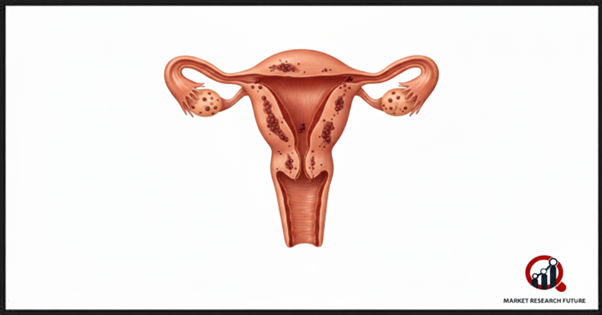Adenomyosis: Wonder What’s Happening?

Adenomyosis - Maybe the name is a little complicated. But for a lot of women, it is painful, unnoticed, and misunderstood. Adenomyosis is when tissue that lines the uterus (the endometrium) begins to invade the muscular wall of the uterus. Picture it this way: the uterus is trying to shed its inner lining every month, but the lining is stuck in the muscle. The result is painful and trapped tissue, and every month it leads to inflammation and heavy bleeding.
Understanding Adenomyosis
Adenomyosis is not rare, but it is still rather soft-spoken in the world of gynecology, leading it to be underdiagnosed. Symptoms align closely with conditions such as endometriosis and, sadly, fibroids. The condition can affect any woman of any age, but most women besides children and those approaching menopause are most likely to have it. The walls of the uterus can become thicker and tend to be 'soft' with less muscle, and this leads to extreme cramps, bloating, and heavy and long bleeding. Intercourse can hurt a lot, and losing your cycle and pelvic pain in the lining can make your life tremendously harder. For those women who are not so lucky, the pain in the condition is what truly leads to being diagnosed.
Why It Happens
The full reason for adenomyosis is not known completely, though there are some guesses factors like hormones, genetics, and tissue. With adenomyosis, estrogen plays a critical role in hypertrophy and monthly shedding of the misplaced tissue.
Adenomyosis can also occur after some level of hormonal imbalance, childbirth, and uterine surgeries. Having some of these family members with adenomyosis can also help increase the risk. This suggests genetics can affect the responsiveness of the uterine tissue.
Living with the Symptoms
Adenomyosis can first present itself with heavy, painful menstrual bleeding leading to fatigue. It can also lead to painful mood changes, back pain, and difficulty in getting pregnant. This can lead to a misdiagnosis, as there are many disorders in the reproductive system.
They should be studied more if the crying spells to bleeding are getting worse. This can lead to an ashy diagnosis, which is really life-altering.
Diagnosis and Care
To diagnose adenomyosis, healthcare providers typically perform a pelvic exam and imaging tests (i.e., ultrasound or MRI) to check the walls of the uterus. Even though adenomyosis cannot always be cured entirely, if the symptoms and the stage of life it is in are taken into consideration, it can be managed.
The least complicated and least invasive form of treatment is hormonal therapies, in which the estrogen and progesterone levels are balanced. Also, the affected tissue could be removed through minimally invasive surgeries. In severe cases, for women not planning on having more kids, we may have to consider a hysterectomy.
Many patients also experience relief through lifestyle changes. Stress management, exercise, anti-inflammatory diets, and pain control can ease the impact adenomyosis has on day-to-day life.
Adenomyosis and Fertility
Adenomyosis can affect fertility and implantation, which is the process of attaching an embryo to the uterus. With the help of modern medicine, many women with adenomyosis have successfully conceived with the use of fertility treatments, hormonal therapies, and newly developed surgical techniques.
Things To Keep in Mind
Adenomyosis can drastically change lives, but thankfully, it does not threaten life itself. Healing starts with understanding your body and responding to its messages. Every woman’s pain is different; some might only have mild discomfort, while others can have severe pain. In all cases, it is best to get medical advice earlier on so that you can avoid years of silent suffering.
Conclusion
Adenomyosis teaches us that it is not normal to have painful periods. It is not just your body telling you that you are stressed. If your periods are longer, heavier, and more painful, your body is trying to communicate something serious. With enhanced knowledge, greater empathy, and better diagnostics, women can now expect to receive more support and have greater control over their lives.

Leave a Comment